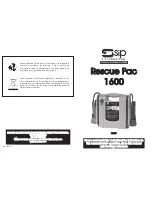
Section 2
Installation
Î
Î
Î
Ready
DB ON
Display
Identification
Monitor
Installation 2-1
MN1221
Receiving & Inspection
Baldor products are thoroughly tested at the factory and carefully packaged for shipment.
When you receive the BPS, there are several things you should do immediately.
1.
Observe the condition of the shipping container and report any damage
immediately to the commercial carrier that delivered the product.
2.
Remove the BPS from the shipping container and remove all packing materials.
The container and packing materials may be retained for future shipment.
3.
Verify that the part number of the BPS you received is the same as the part
number listed on your purchase order.
4.
Inspect the BPS for external physical damage that may have been sustained
during shipment and report any damage immediately to the commercial carrier.
5.
If the BPS is to be stored for several weeks before use, be sure that it is stored
in a location that conforms to published storage humidity and temperature
specifications stated in this manual.
Location Considerations
The location of the BPS is important. Installation should be in an area that is protected
from direct sunlight, corrosives, harmful gases or liquids, dust, metallic particles, and
vibration. Exposure to these can reduce the operating life and degrade performance.
Several other factors should be carefully evaluated when selecting a location for
installation:
1.
For effective cooling and maintenance, the BPS should be mounted on a
smooth, non-flammable vertical surface.
2.
At least 0.6 inches (15mm) top and bottom clearance must be provided for air
flow. Refer to Section 7 for mounting dimensions.
3.
Altitude derating. Up to 3300 feet (1000 meters) no derating required. Derate
the continuous and peak output current by 1.1% for each 330 feet (100 meters)
above 3300 feet.
4.
Temperature derating. From 5
°
C to 40
°
C ambient no derating required.
Above 40
°
C, derate the continuous and peak output current by 2.5% per
°
C
above 40
°
C. Maximum ambient is 50
°
C.
BPS LEDs’
The system troubleshooting procedures involves observing the status of the “Ready”
LED, the “DB On” LED and the “Monitor” 7 segment display. Table 2-1 provides
information related to the indications provided by these devices.
The DB LED is on whenever Dynamic Brake power is dissipated into the optional DB
(Dynamic Brake) resistor.
Table 2-1 Operating Mode Indications
Ready
Monitor
Status
OFF
OFF
BPS disabled or powered off
Green
Decimal
Point
BPS enabled, normal operation, no faults
OFF
0
Logic supply power loss
OFF
1
Logic supply undervoltage
OFF
2
Bus undervoltage
OFF
3
Loss of one or more power phases (L1, L2, L3)
OFF
4
Overtemperature
OFF
5
Dynamic brake fault
OFF
6
Reduced voltage starting feature is active and
input AC power is too high (L1, L2, L3)
Green
L
Reduced voltage starting feature is active






































